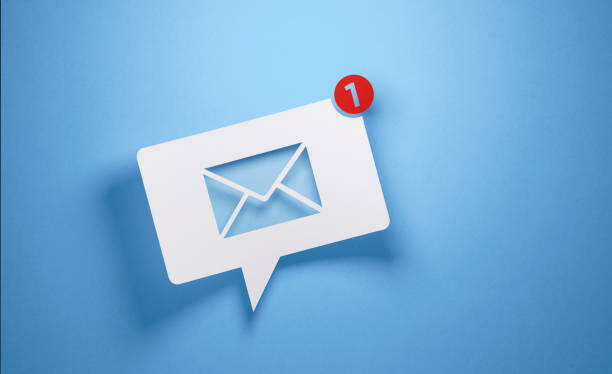Email campaigns remain a powerful way to connect with audiences. Whether you want to share updates, promote products, or build relationships, a well-structured email campaign can drive results. However, creating a successful email campaign involves more than just sending a message. It requires planning, strategy, and a clear understanding of your audience.
This guide will walk you through everything you need to know about crafting a strong email campaign.
Table of Contents
ToggleUnderstanding the Purpose of Your Email Campaign
Before you begin, it is important to define your purpose. Ask yourself:
- What do you want your email campaign to achieve?
- Who is your target audience?
- What action do you want readers to take?
By answering these questions, you can shape your campaign with a clear goal in mind. Whether it is increasing sales, gaining subscribers, or sharing valuable information, knowing your objective will help you create a focused email.
Creating an Attention-Grabbing Subject Line
The subject line is the first thing recipients notice. A compelling subject line can make or break your email campaign. To write a subject line that grabs attention:
- Keep it short and specific.
- Use action words to inspire curiosity.
- Avoid misleading phrases or clickbait.
For example, instead of “Check This Out,” try “5 Ways to Save Money Today.” A subject line like this gives readers a reason to open your email while staying honest about its content.

Structuring Your Email for Maximum Impact
How your email is organized affects how well your message is understood. A clear and logical structure ensures that your readers stay engaged.
- Start with a Strong Opening: Begin with a warm greeting and a sentence that connects with your audience. For instance, you can acknowledge their needs or show appreciation for their time.
- Use Short Paragraphs: Breaking your content into smaller chunks makes it easier to read.
- Include Subheadings: Subheadings help readers quickly find the information they need.
- End with a Clear Call-to-Action: Every email campaign should guide the reader toward a next step. Whether it is clicking a link, replying, or making a purchase, your call-to-action should be clear and specific.
Understanding Your Audience’s Needs
A successful email campaign speaks directly to the audience’s interests and challenges. You can achieve this by:
- Conducting Surveys: Ask your subscribers about their preferences.
- Analyzing Past Campaigns: Check which topics and formats had the best results.
- Segmenting Your List: Group your audience by demographics, interests, or behaviors to send more personalized emails.
When your emails feel relevant, readers are more likely to engage with them.
Choosing the Right Design and Layout
The way your email looks matters just as much as its content. A clean and visually appealing design encourages readers to stay on the page. Follow these tips:
- Use a Responsive Design: Ensure your email looks good on both mobile devices and desktops.
- Include High-Quality Images: Choose visuals that support your message without overwhelming the text.
- Stick to a Simple Color Scheme: Too many colors can distract readers.
Consistency in design strengthens your brand’s identity and builds trust with your audience.

Personalization: A Key to Building Connection
People respond better to emails that feel personal. Adding small touches of personalization can make a big difference in your email campaign’s success.
- Use the recipient’s name in the greeting.
- Reference past purchases or interactions.
- Send emails that match the recipient’s interests or preferences.
When readers feel like the email was created just for them, they are more likely to engage.
The Role of Timing in Email Campaigns
When you send your email can affect how many people read it. The timing of your email campaign should consider:
- Time Zones: Send your emails when your audience is most likely to be active.
- Days of the Week: Studies show that certain days, like Tuesday and Thursday, often result in higher open rates.
- Frequency: Avoid overwhelming your audience with too many emails, but stay consistent enough to remain memorable.
A well-timed email reaches your audience when they are ready to engage.
Crafting a Strong Call-to-Action
A call-to-action, or CTA, is the part of your email that tells readers what to do next. To make your CTA effective:
- Keep it simple and action-oriented.
- Use buttons or bold text to make it stand out.
- Place it in a logical location, such as near the end of the email.
Examples of CTAs include “Shop Now,” “Learn More,” or “Sign Up Today.” Make sure it matches the purpose of your campaign.
The Importance of Testing Your Email Campaign
Even the best email campaigns can benefit from testing. Running tests helps you find out what works best for your audience.
- A/B Testing: Compare two versions of an email to see which performs better.
- Check for Errors: Proofread your email for typos and broken links.
- Test Across Devices: View your email on different devices to ensure it looks good everywhere.
Small adjustments can lead to big improvements in your results.

Monitoring and Analyzing Campaign Performance
After your email campaign is sent, monitoring its performance is essential. Key metrics to track include:
- Open Rate: The percentage of recipients who opened your email.
- Click-Through Rate: The number of people who clicked on links in your email.
- Unsubscribe Rate: How many people removed themselves from your list.
These insights show what is working and what needs improvement. Use them to refine your future campaigns.
Avoiding Common Email Campaign Mistakes
Even with the best intentions, mistakes can happen. Watch out for these common pitfalls:
- Sending emails without testing them first.
- Using overly complicated or technical language.
- Forgetting to include an unsubscribe option.
By avoiding these errors, you can maintain your audience’s trust and keep them engaged.
Why Consistency Matters in Email Campaigns
Consistency builds familiarity and trust. Your audience should recognize your emails immediately, whether it is through your design, tone, or timing. This includes:
- Using the same sender name and email address.
- Maintaining a regular sending schedule.
- Keeping your tone and branding consistent across campaigns.
Final Thoughts on Email Campaign Success
Creating a successful email campaign takes effort, but it is worth it. By focusing on your audience, crafting compelling content, and staying consistent, you can build lasting connections through email. Remember, every part of your email—from the subject line to the call-to-action—plays a role in achieving your goals.
Keep testing, learning, and improving your strategies to continue delivering valuable and engaging emails to your subscribers.








